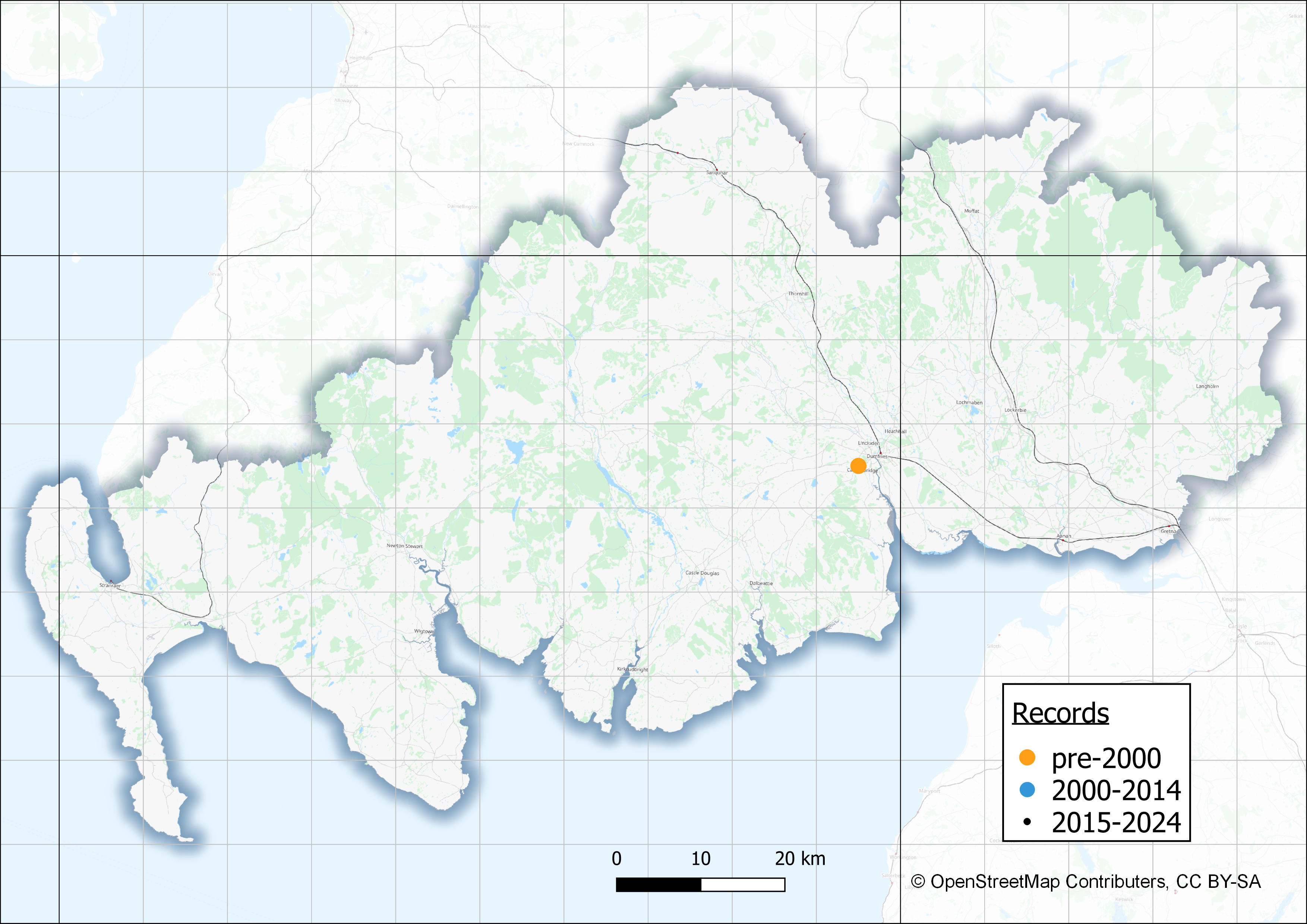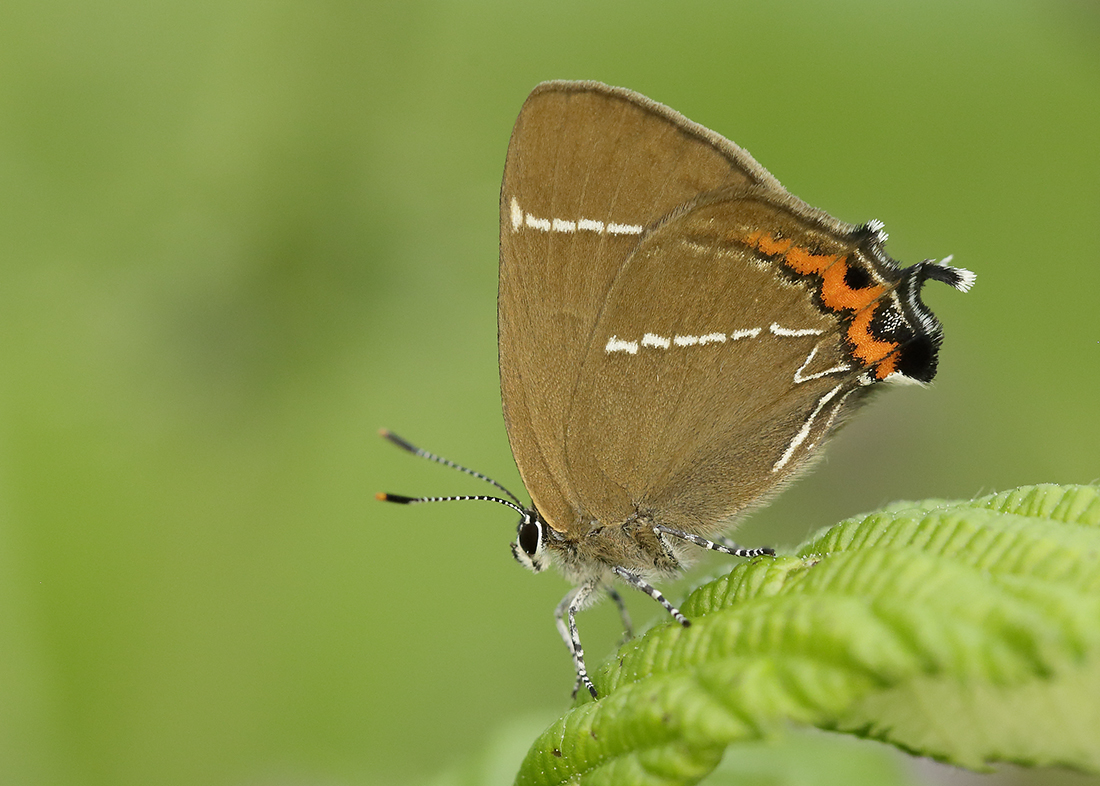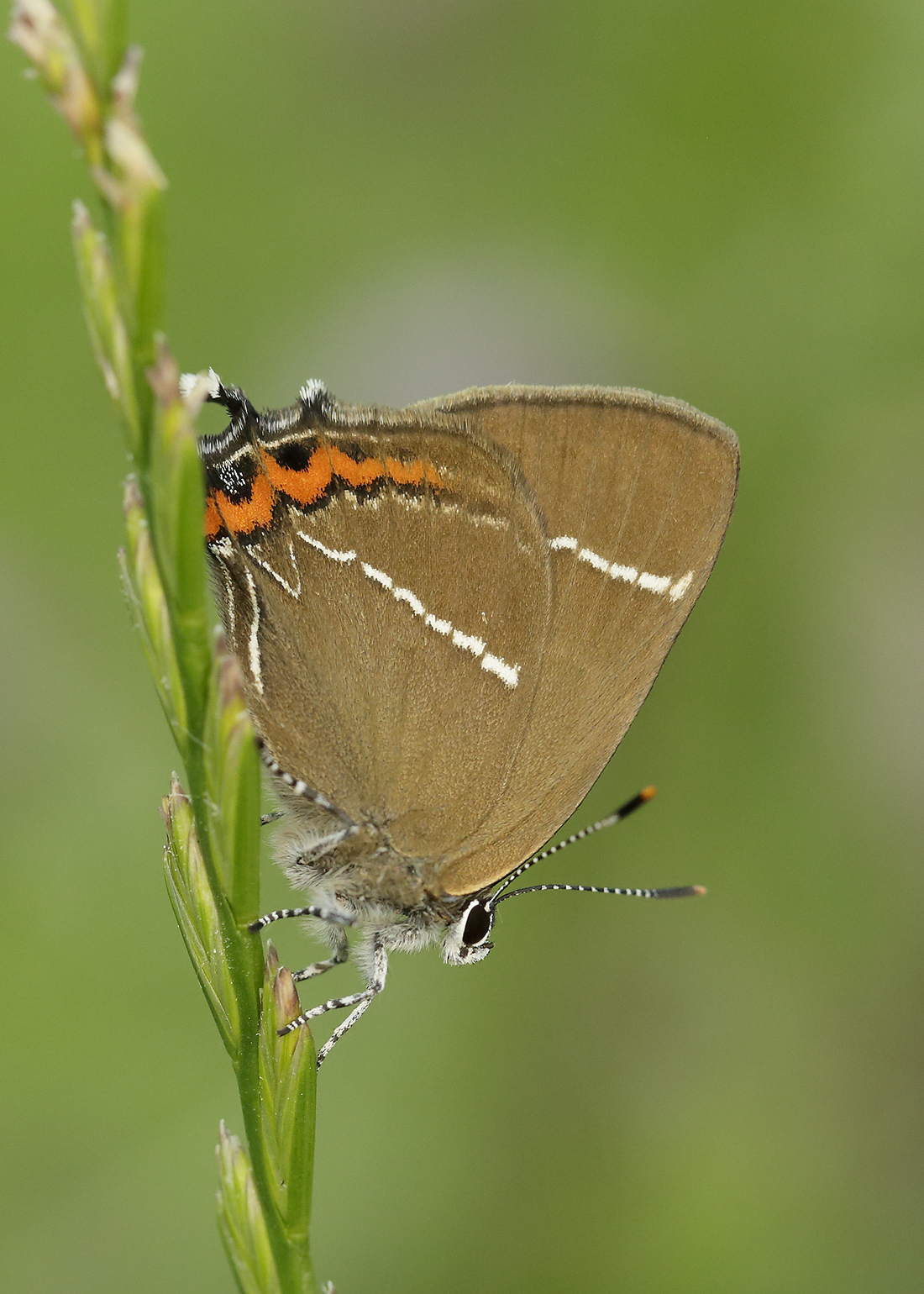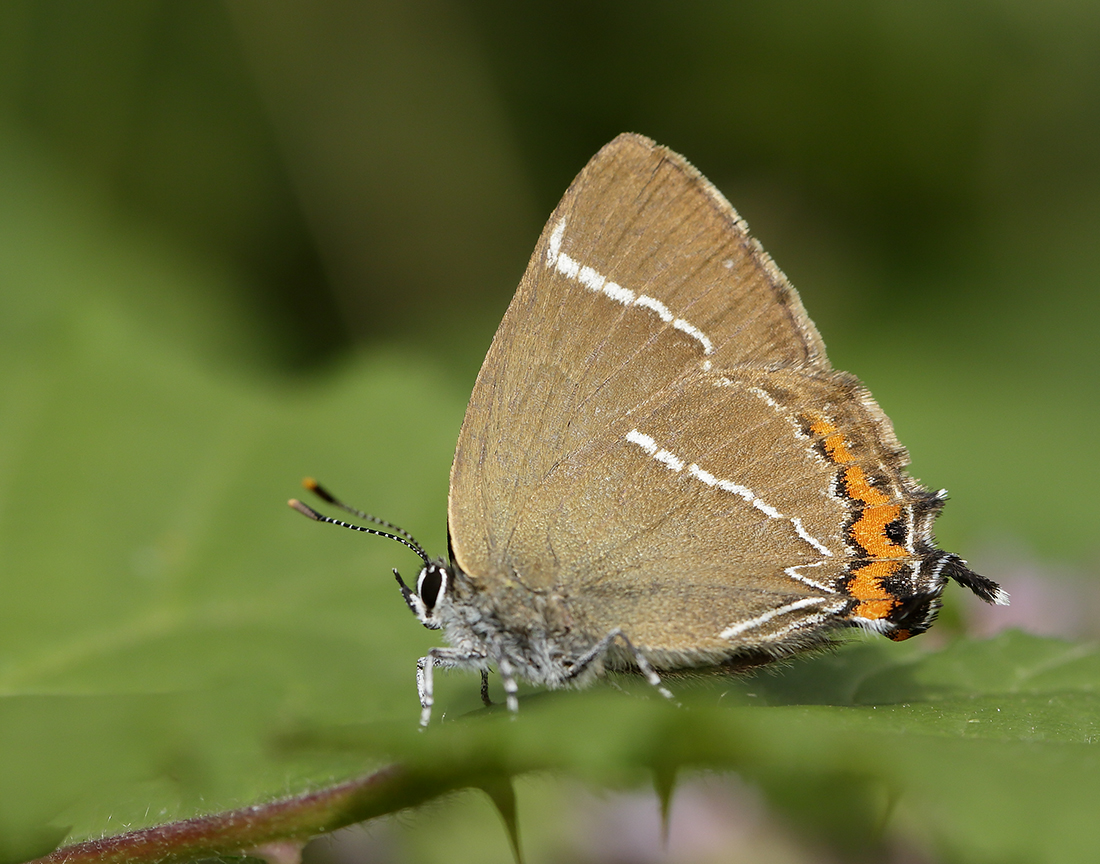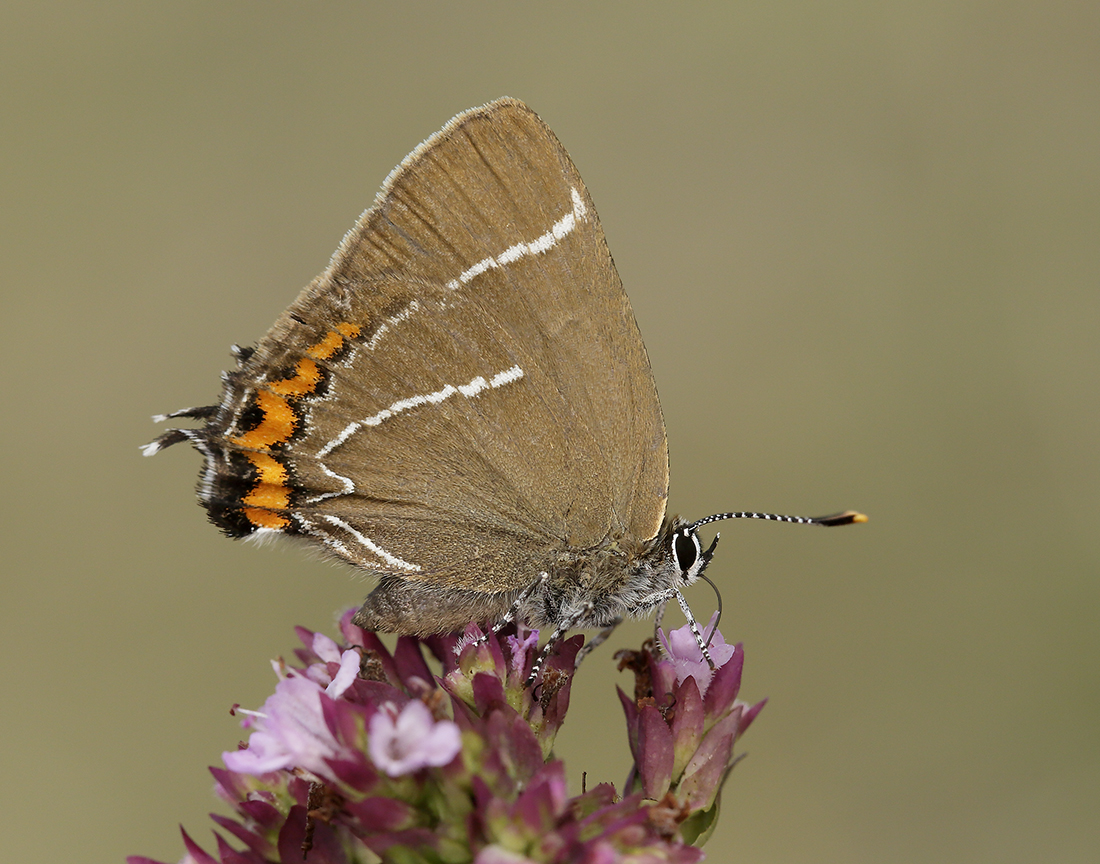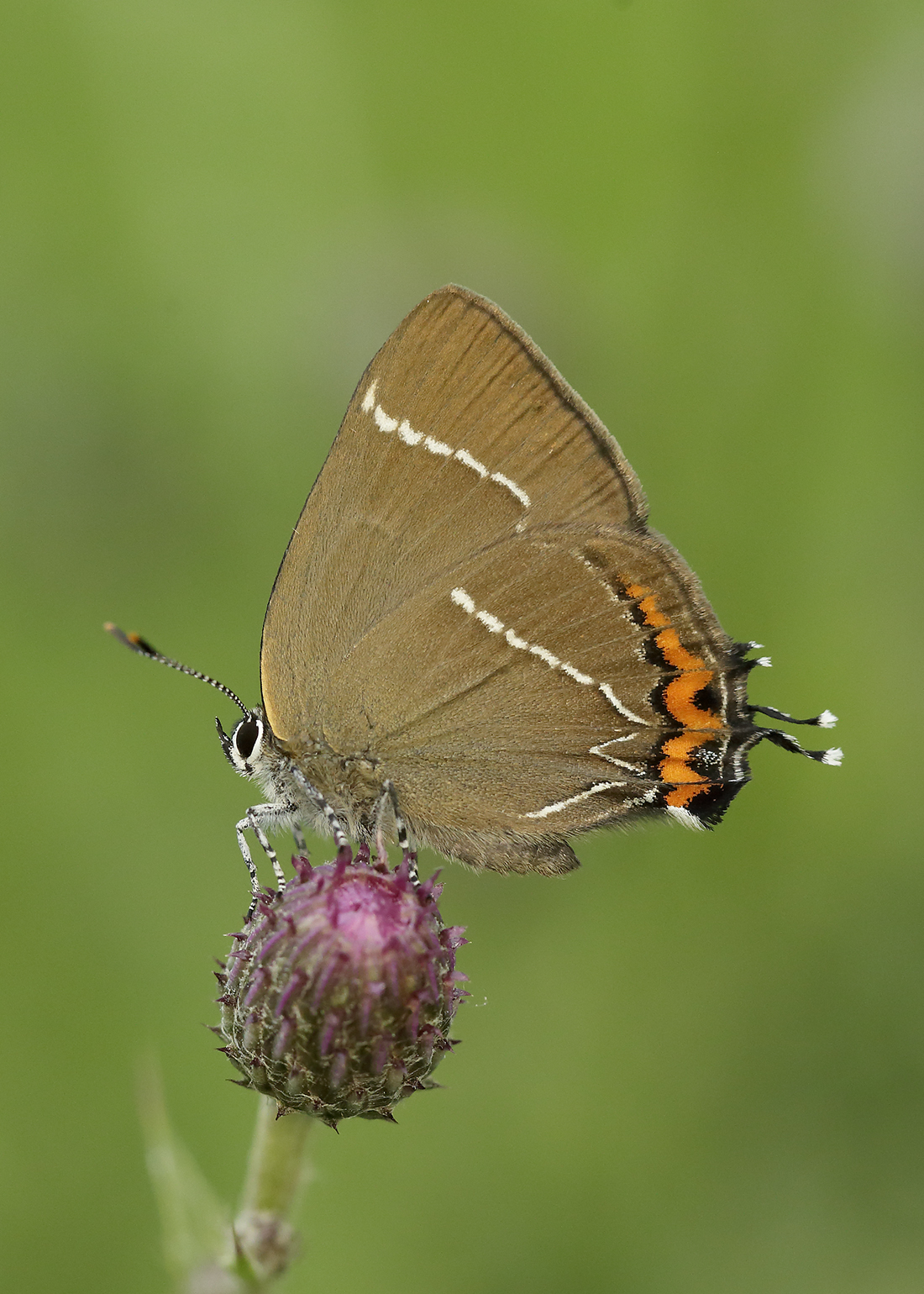Although the White-letter Hairstreak suffered massive losses in England due to the impact of Dutch Elm Disease on English Elm, it is a species that is moving northwards and can now be found close to the Dumfriesshire border near Carlisle, at Wetheral and Brampton.
However, the first record of a Scottish White-letter Hairstreak in recent times was made in the Borders in 2017 at Paxton on the Tweed. Since then, the area known to be occupied has been increased through searches for adults and eggs. It has now been recorded close to Selkirk, about 30 miles/50km from our regional boundary.
Identification
This species is just as elusive as the Purple Hairstreak as it similarly spends much of its adult life in the tree canopy. Until 2017 one could assume that dark butterfly silhouettes flitting backwards and forwards over the tallest trees in July meant the presence of Purple Hairstreaks, but this could now mean that a colony of White-letter Hairstreak is present.
At eye-level the butterfly is unmistakeable due to the white markings on the underwings that give it its name. As with some of the other hairstreaks, the fresh adult sports ‘tails’ on its hind wings as mock antennae to fool birds. After a few days these are often missing, damaged during flight through the trees or perhaps used successfully as a decoy to deflect a bird peck.
Looking for the very distinctive ‘flying saucer’-shaped eggs, once the leaves have fallen in the autumn, is a very effective way of searching for the butterfly, as well as providing proof of breeding.
Life cycle & flight period
One generation a year, the adults peaking in July. Overwinters as an egg. The arrival of longer days in spring prompts the leaf buds to burst, and this is when the caterpillars hatch to feed on the new growth. Once fully grown, the caterpillar attaches itself to a leaf with a silken thread and pupates, the adults emerging to fly from late June into August.
Larval foodplant
Elms, primarily Wych Elm in northern Britain.
Habitats
Adult White-letter Hairstreaks spend most of their lives in the tree canopy of elms, oaks and Ash, feeding on honeydew produced by aphids. Adults can be seen above broad-leaved woodland but also around single and hedgerow trees, but almost always with species of elm in the vicinity.
Hot weather can lead to a shortage of honeydew and then the adults are forced to descend to find nectar on Bramble, Hemp-agrimony, Ragwort and thistles – similar behaviour occurs in the Purple Hairstreak. The females also descend to lay at least some of their eggs at the base of Elm buds or at the junctions of twigs on warm, sunny branches, where the eggs will spend the winter.

